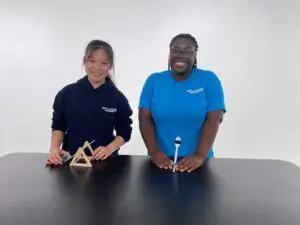Gravity: A force of attraction that pulls objects toward each other; in the case of a rocket, the force is pulling it toward the center of the Earth.
Newton’s Third Law of Motion: For every action, there is an equal and opposite reaction. When hot gas shoots out of the bottom of a rocket, it causes the rocket to fly in the opposite direction.








18 Comments
Awesome
Thank u!
i was cool and fun to watch
Thank you!
It was great. ?????????
Amazing